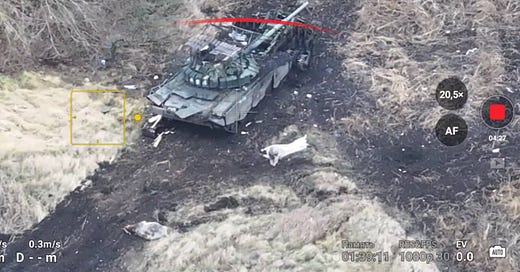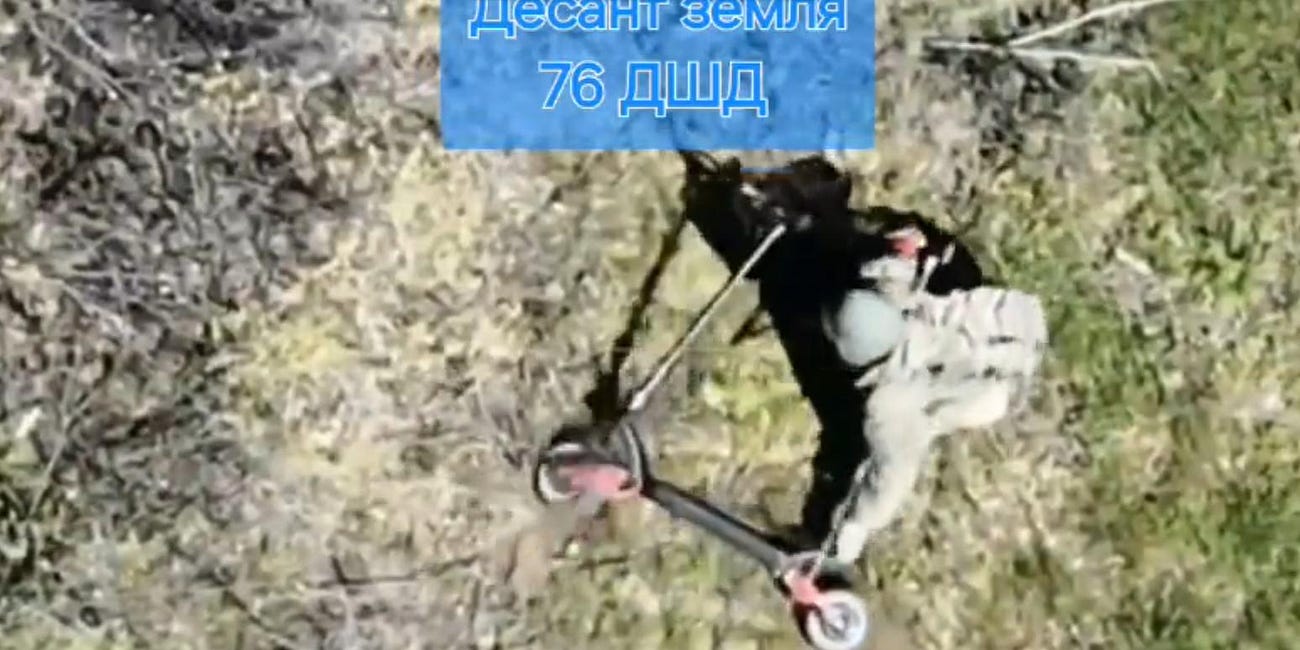Ukraine Is Building a Nine-Mile-Wide 'Wall' of Drones
The plan is to extend the wall many miles deeper into Russian-controlled territory
In a little over a year, Ukrainian industry increased production of small drones from 20,000 a month to 200,000 a month. And the Ukrainian armed forces are deploying the flying robots to create what David Kirichenko, a fellow with the U.K.-based Henry Jackson Society, described as a “wall” of drones.
Russian forces typically increase offensive operations in Ukraine as the winter turns to spring. This year, “Ukrainian soldiers are confident their drones will give the invaders Hell,” Kirichenko wrote. “A new kind of warfare—low-cost, high-impact, a drone wall.”
Tiny first-person-view drones—steered via wireless radio or fiber-optic cable by an operator wearing a headset displaying what the drone sees with its forward-facing camera—account for most of the production.
Each weighs a few pounds, costs a few hundred dollars—depending on whether it’s a wireless or fiber-optic model and includes a night-vision sensor—and ranges several miles clutching one of several warhead types.
The 6,000 or 7,000 FPVs Ukrainian ground combat brigades and drone regiments launch every day, on average, inflict 80 percent of the casualties the Russians suffer every day, according to U.S. Rep. Pat Harrigan, a North Carolina Republican. That’s potentially 800 or more Russian drone victims a day.
Given the persistent shortage of trained infantry in Ukraine’s approximately 100 combat brigades, drones—along with artillery and mines—are now the country’s main means of defense. “We’re holding the line with drones,” a Ukrainian soldier told Kirichenko. “There’s barely anyone in the trenches.”
At present, Ukraine’s FPVs dominate the battlefield as far as nine miles from the line of contact. Efforts are underway to extend the drone kill zone to 25 miles. “The goal: deny Russian forces the ability to move undetected across the front,” according to Kirichenko.
A wall with layers
Drones that capture and repeat radio signals, thus increasing the range of the farthest FPVs, are critical to this extension. As the control system falls into place, analyst Andrew Perpetua anticipates the Ukrainian drone kill zone will stretch even farther. “You have layers of drone superiority,” Perpetua projected. One layer at 62 miles, one layer at 31 miles, one at 25 miles, another at 12 miles and the closest at six miles.
Russia could counter with its own drones, of course. But Russian industry—cumbersome and often corrupt—struggles to scale and innovate at the same pace as Ukrainian industry. At the same time, Ukraine’s electronic warfare—that is, radio-jamming—is much more effective than Russia’s and often ground Russia’s wireless drones while Ukraine’s own drones fly freely.
If Ukrainian forces can preserve their drone edge and deploy it aggressively, it might rob Russian forces of any freedom of action. “You push a critical number of drone pilots into each layer [of the drone wall], overwhelming Russian pilots and completely cutting off all logistics access,” Perpetua explained. “I mean, all artillery is cut off, all infantry cut off, out to 100 kilometers,” or 62 miles.
“As Ukraine refines its use of autonomous systems, Russia should prepare to suffer even greater losses,” Kirichenko warned. “Mass assaults, once effective in places like Bakhmut, are now being met by waves of Ukrainian drones. Ukraine’s drone wall is rapidly defining this phase of the war.”
Read more:
The Russian 76th Guards Air Assault Division Used to Be Elite. Now Its Troops Ride on Electric Scooters.
As recently as two years ago, the Russian 76th Guards Air Assault Division was an elite formation, with better equipment and training than most Russian regiments and divisions.






